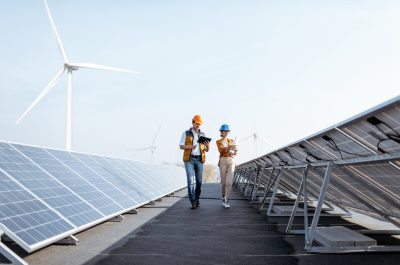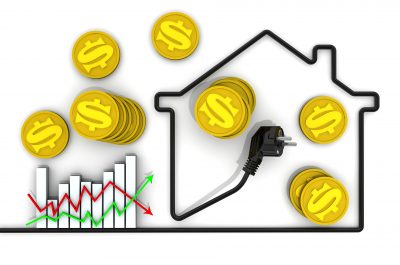Getting ready for summer
The Australian Energy Market Operator (AEMO) this week released its Summer Readiness Plan 2019-20.
The plan outlines what AEMO and the energy industry are doing to prepare the power system for the expected extreme temperatures.
The National Electricity Market (NEM) continues to be under pressure to deliver reliable power during summer in situations where supply is tight and demand is high, but as noted by AEMO, the industry has been taking steps to be as prepared as possible.
AEMO’s report followed months of collaboration with governments and the energy industry to manage risks to the power system.
Since last summer an additional 3,700MW of generation has entered the NEM, with 90 per cent of that capacity coming from rooftop solar and solar farms. There has also been the 210MW gas-fired Barker Inlet Power Station commissioned and an increase in the capacity of the Hallett gas-fired power station with construction of a new 30MW fast-start turbine which is expected to be ready for the summer peak period. Both gas-fired power stations are in South Australia.
AEMO has announced that it has secured 125MW of reserves through off-market generation, as well as demand management programs with electricity users.
The 125MW of reserves includes 61MW of long notice Reliability and Emergency Reserve Trader (RERT) contracts and 64MW through the joint AEMO/Australian Renewable Energy Agency (ARENA) demand-side participation trial.
AEMO has also entered short and medium-term RERT agreements that will allow it call on up to an extra 1,500MW of reserves if required, with the bulk of this (1,000MW) available for Victoria and South Australia.
Generation
A key media focus this year has been on the availability of power plants in Victoria, particularly units at Loy Yang A and the gas-fired Mortlake power stations.
Investment levels of hundreds of millions by key asset owners provide a good indication of how intent the industry is to ensure continuous supply. AGL for example have invested $150 million in key sites at Macquarie, Loy Yang and Torrens to improve preparedness for the busy summer months. This investment is on top of considerable ongoing maintenance spend and will fund more than a dozen initiatives to improve performance at Liddell and Bayswater plants in NSW’s Hunter Valley.
In addition to its maintenance spending, AGL has stated that it is confident that repairs to Loy Yang A’s Unit 2 are on track and will be completed by mid-December ahead of the traditional summer peak period.
Alinta Energy, owners of Loy Yang B in Victoria’s Latrobe Valley, have invested $80 million to upgrade the plant’s Unit 2. Engie has spent $75 million over the past two years upgrading its Pelican Point plant in South Australia, and several million dollars at its Synergen gas peaker sites and Port Lincoln power station. EnergyAustralia has spent over $180 million on an extensive maintenance program across its generation fleet and has upgraded its Hallett and Jeeralang gas-fired power stations.
Origin Energy also expects its Mortlake Power Station generating unit that was damaged by an electrical fault on 8 July 2019 to be back in service on 30 December, 10 days later than its original advice to the market operator, but ahead of the summer peak. Mortlake is a gas peaking power station and the impacted unit represents less than 3 per cent of Victoria’s total installed generation capacity.
According to energy analysis for WattClarity, the reliability for Victoria is looking better placed than when AEMO issued its Electricity Statement of Opportunities earlier in the year, based on available objective data[i].
Networks
The electricity transmission and distribution networks maintain the poles and wires that deliver electricity to almost every Australian home and business.
Networks do not produce electricity, but they have a significant role to play in the management of local grids. During expected extreme weather, networks will also try to avoid any non-critical scheduled outages.
Heat and infrastructure
Like generators, heat is not a friend of networks.
Transformers that scale up and down the voltage of electricity are oil-cooled and may have their operation limited at extreme temperatures.
Overhead power lines supply most electricity. During extreme weather conditions, these can become damaged by falling trees, strong winds or bushfires. When disruptions occur, networks respond quickly to dispatch crews and restore power.
Faults are generally triaged by the impact of an outage, such as number of customers offline. Higher voltage connections (that may supply thousands of houses) are restored first, followed by more local systems. Generally, individual connections to single premises are restored last.
Load shedding
When insufficient electricity is being supplied to the system, and AEMO has exhausted all reserve emergency mechanisms, networks have the unfortunate task of shedding load.
Load shedding is a last resort.
When directed by AEMO, networks will shed load in the distribution network.
Priority to remain on supply is given to critical infrastructure such as public transport and hospitals, though this is not guaranteed depending on shedding required by AEMO.
Notice for load shedding can be very short. If a generator fails or interconnector trips, load may need to be shed fast. Networks will attempt to inform customers where possible.
When outages are required over a longer period, networks will generally rotate through different areas to minimise the inconvenience.
A copy of an Energy Networks Australia and Australian Energy Council Fact Sheet on energy supply and heatwaves can be found here.


